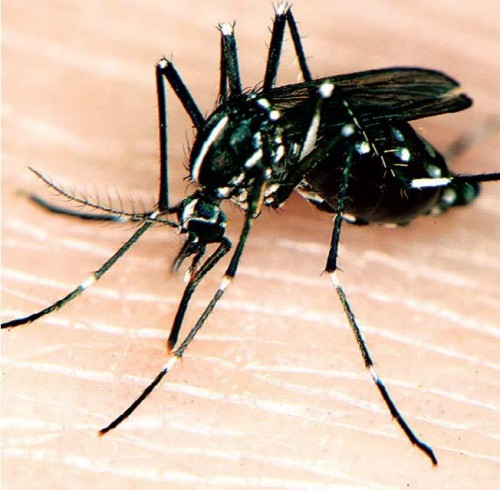Ballot takes shape as qualifying ends
September 14, 2011
T’bonne commission wants count on HNC traffic
September 16, 2011The proliferation of the West Nile virus, a potentially debilitating and sometimes fatal infliction that has claimed the lives of 1,206 people in the United States since 2002, has ceded dramatically, with just 125 cases reported nationally through early September 2011.
In Louisiana, there were eight reported cases of the mosquito-borne virus as of last week, down from a total of 34 in 2010 and an average of 126 over the past nine years.
“We’ve noticed a drop, not just in Louisiana, but across the country the number of cases have gone down,” said Kyle Moppert, a medical entomologist with the state Office of Public Health. “That’s great for epidemiologists to talk about, but if it’s your mother or it’s you or your child, if you’re one of the small number of cases, then it’s critical.”
The majority of people infected with WNV do not suffer from severe symptoms. In fact, 80 percent of people who contract the virus show no symptoms at all, according to U.S. Centers for Disease Control and Prevention (CDC).
But the most severe variation of the virus, a neuroinvasive disease, can be fatal and is marked by serious illness, a high fever, disorientation, vision loss and paralysis, among other life-inhibiting ailments, the CDC says.
WNV is most common in summer and fall. Although the season has yet to conclude, the number of reported cases is well behind pace of the average 3,400 national cases per year since 2002.
Although the peak season for human contraction commences when the temperature begins to rise, the disease is amplified when birds nest in the spring.
Mosquitoes feast on the birds until they fledge, the insects exponentially spreading the virus amongst themselves through multiple hits on shared hosts before setting their sights on humans and horses, Moppert said.
Moppert and Herff Jones, one of the state’s leading authorities on mosquito abatement, have theories on why cases of West Nile are down so dramatically this year, chiefly the dry summer, a natural abatement to the aquatic insects’ reproduction, and when pressed on why the decline has been steady over the last few years, they point to enhanced surveillance techniques since the outbreak but admit most explanations are speculative.
“This is an aquatic insect, and so if there’s a lack of water, you have a lack of mosquitoes,” Moppert said. “A lack of mosquitoes means that there’s not an ability for the virus to build up in the birds and the mosquitoes.”
Just as the virus’s intensity among the human population has declined, it’s also down in the mosquito population, Jones said.
“If we’re talking about the virus activity in the mosquito pool, it’s running just about the same as the human virus indication, which has been below what we experienced last year and below, probably, an average of the past five years,” said Jones, who is the president of the Louisiana Mosquito Control Association.
As far as attribution for the long-term decline, researchers are searching for answers. The leading theories are that humans have built up immunities and birds aren’t as susceptible to the virus, thus the springtime amplification isn’t as significant.
Both ideas cut two ways. Moppert said they are still finding the virus in the bird population and wonders if a natural, human-achieved immunity could result in such a steep decrease so quickly.
Whatever the cause, and keeping in mind that it could be a one-year low and rise again in the future, mosquito abatement continues to be a furious and evolving practice.
State researchers know a lot more about the disease now than they did when the epidemic breached Louisiana in 2002.
The primary disease-carrying species in the state are the Southern House and Asian Tiger mosquitoes.
The Southern House species tends to gravitate towards water with “high organic content,” Moppert said, meaning septic ditches. Therefore, they are most prevalent in rural parts of the state that do not have underground sewage, but they populate metropolitan areas.
“The Asian Tiger mosquito came into this country in the early 1980s,” Moppert said. “It was brought in in used tires into the port of Houston, Texas. They brought them in from Taiwan, and within a few years it had swept across the country. …That mosquito is a very, very common mosquito in urban areas now, and it’s also a vector of West Nile.”
The Tri-parishes have only reported eight cases of the neuroinvasive disease since 2002, mirroring a coastal-wide trend. It takes a certain type of mosquito to breed in the brackish water in the low-lying areas along the coast, Jones said, and most of the adept species are more of a nuisance than a threat.
“They handle the pH change from freshwater to slightly salty water,” Jones said. “They are very hearty and they produce in vast numbers and they are very apt at finding blood meals.
“They are vicious biters. That’s what we experience, especially in Iberia, Vermillion, and St. Mary. When there is a biting frenzy at 6 p.m., you’ll notice that there are certain parts of the year that the mosquitoes are horrendous. For the most part, they are not disease carrying.”
In the cases that coastal residents are bitten by a disease-carrying species, Jones said some people disregard minor cases as a head cold or the flu and don’t go to the doctor, so it’s not reported.
The most efficient way to gauge the intensity of West Nile among the mosquito population is through the use of “grab-it traps,” which hold 97 percent of the mosquitoes they come in contact with, Moppert said.
Contractors continue to use what government agencies regard as a dated method of surveillance, sentinel chickens, which are left outside in a cage and bled and tested every few weeks. A traditional technique, it can prove the virus is present in an area, but it does not offer an accurate gauge of time.
“We live in a subtropical environment,” Jones said. “Without abatement or mosquito control, we literally wouldn’t be able to conduct business our outdoor activity at all.
“We don’t have a long or hard enough winter to actually have a dormancy in our insect activity. Our winters are so short and so mild that really, insects and mosquitoes can breed year-round in Louisiana.”
WNV was first detected in the Western Hemisphere in 1999, according to National Biological Information Infrastructure, an agency managed by the federal government. It has since spread to every state in the continental U.S., seven Canadian provinces, Mexico and a few Caribbean islands.
In the U.S., the number of reported cases peaked at 9,862 in 2003. Louisiana’s record high was in the year prior, also the first year of state records, when officials reported 328 infects, 204 of which were neuroinvasive.
It is unknown how long ago WNV formed but researchers say it has been at least 1,000 years.
A research paper published on the CDC website concludes the virus may have caused the illness that killed Alexander the Great more than 2,300 years ago. The paper cites reports of abnormalities among ravens, including a flurry of the birds dying at the emperor’s feet weeks before his death, as a clue for the diagnosis.
“The important thing is the message is getting out,” Jones said. “Physicians are highly aware of the virus and its indications. People are taking a personal responsibility for taking precautions, such as wearing repellents and protective clothing and avoiding activity when mosquitoes are most active.”
The Asian Tiger mosquito, which was brought into the United States in the 1980s with a shipment of used tires from Taiwan to Houston. It has since spread and is one of the primary culprits of West Nile in Louisiana. COURTESY PHOTO












